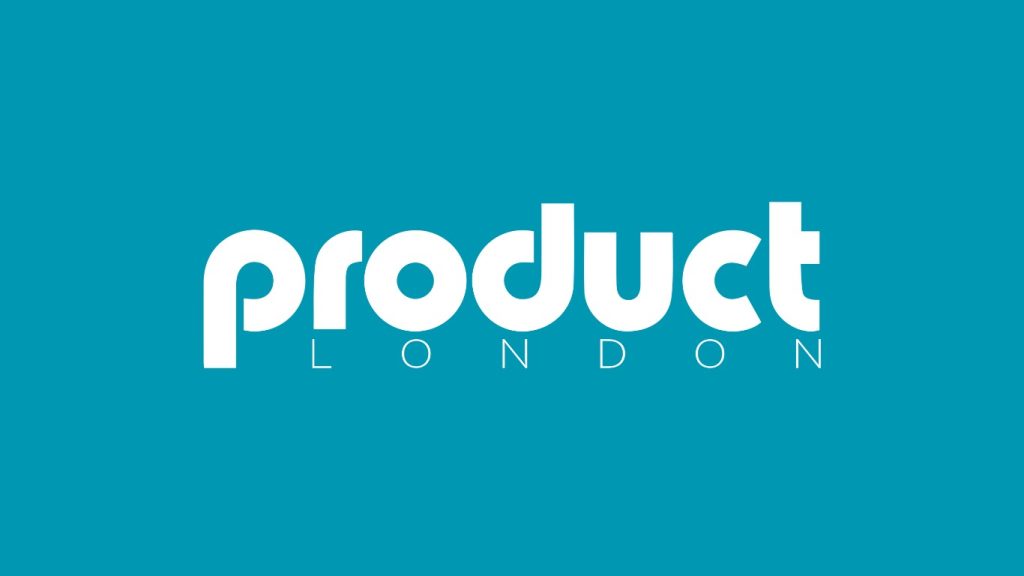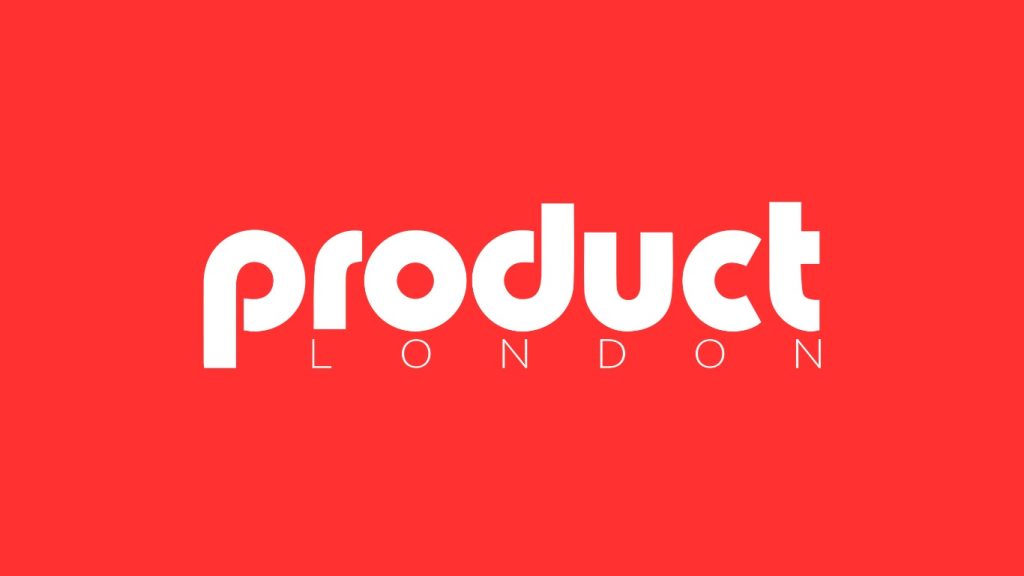Influencer deals frequently falter due to several prevalent missteps. A significant issue is the lack of clear objectives, with success more likely when SMART goals are employed. Misaligned influencer selection exacerbates failures as brands often prioritize follower counts over engagement metrics and audience fit. In addition, content authenticity is imperative, with 60% of followers distrusting excessive promotions. Ignoring audience insights and neglecting legal compliance further complicates campaigns. Short-term partnerships and poor communication practices also undermine success by disrupting potential brand loyalty and clarity. Discover how these elements intertwine to jeopardize influencer collaborations and uncover effective strategies for success.
Key Takeaways
- Lack of clear objectives leads to unrealistic expectations and ineffective influencer campaigns.
- Misaligned influencer selection causes disconnect between influencer followers and brand target markets.
- Inauthentic content creation results in audience skepticism and reduced engagement.
- Overlooking transparency and legal compliance damages brand trust and risks regulatory penalties.
- Short-term partnerships hinder relationship building and limit audience engagement.
Lack of Clear Objectives
Many marketers fall into the trap of initiating influencer campaigns without clearly defined objectives, which can lead to unrealistic expectations and inefficient use of resources. Influencer marketing campaigns thrive on specificity and clarity; without these, they risk faltering. The lack of clear objectives often results in campaigns that fail to resonate with target audiences, thereby wasting valuable resources.
Data indicates that 91% of marketers report satisfaction when goals are well-defined, underscoring the necessity of establishing specific goals from the outset. Without specific goals, measuring success becomes a formidable challenge, complicating the evaluation of return on investment.
The average ROI for influencer marketing stands at a promising $5.78 for every dollar spent, but this potential is only realized through campaigns that are strategically aligned with precise objectives. Establishing SMART goals—Specific, Measurable, Achievable, Relevant, and Time-bound—provides a structured framework that enhances focus and effectiveness.
Furthermore, realistic profit expectations based on product pricing and market demand are essential. Understanding that not all site visitors will convert to buyers helps set achievable benchmarks, ensuring that the influencer marketing campaigns are both efficient and effective.
Clear objectives are consequently critical for measurable success.
Misaligned Influencer Selection
When initiating influencer marketing campaigns, the selection of influencers is an essential decision that can greatly determine the success or failure of the initiative. Misaligned influencer selection often stems from a narrow focus on follower count, yet 67.7% of marketers acknowledge the complexity of this task, emphasizing engagement rates and audience demographics as paramount for successful influencer partnerships.
An influencer whose audience does not align with the brand’s target audience can lead to suboptimal outcomes, underscoring the necessity for detailed audience analysis to confirm relevance.
Trends indicate that micro-influencers, with followers ranging from 10,000 to 100,000, frequently outperform larger counterparts due to their superior engagement rates and stronger audience connections. This insight is supported by 66% of marketers who actively engage with micro-influencers, recognizing their potential to drive meaningful interactions within campaigns.
In addition, understanding an influencer’s themes and tone of voice is vital, as these factors notably influence audience affinity with promoted products.
Carefully distinguishing between casual and niche-specific content creators is another strategic consideration. It prevents erroneous assumptions about follower interests, refining targeting strategies, and ensuring the alignment necessary for flourishing influencer partnerships.
Ignoring Audience Insights
As marketers grapple with the complexities of influencer selection, an equally challenging aspect surfaces in the form of audience insights. Ignoring these insights is a critical influencer marketing mistake that can lead to a disconnect between an influencer’s followers and a brand’s target market. This misalignment often results in ineffective campaigns and wasted resources.
Data reveals that 67.7% of marketers find it a major challenge to select the right influencers, underscoring the importance of understanding audience demographics before finalizing partnerships.
A clear illustration of the consequences of neglecting audience insights is when a skincare brand misjudged a beauty influencer’s audience, leading to diminished engagement. The key to avoiding such pitfalls lies in the meticulous analysis of audience interests and demographics.
Research highlights that smaller influencers, who often exhibit a more intimate understanding of their followers, can drive higher engagement and traffic. This trend emphasizes the necessity for brands to guarantee that audience loyalty and receptivity align with their campaign objectives.
Ultimately, aligning the right influencers with audience insights is imperative for achieving successful influencer marketing outcomes and guaranteeing resources are effectively utilized.
Inauthentic Content Creation
Inauthentic content creation poses a critical risk to influencer marketing, as evidenced by 60% of followers expressing distrust towards influencers who excessively promote without genuine connections.
To mitigate this, brands must skillfully balance sponsored and organic content, ensuring that influencers maintain their unique voice and avoid over-promotion pitfalls, as 70% of consumers prefer personal experiences.
Additionally, transparency in content creation is paramount, with research indicating campaigns featuring authentic storytelling achieve 50% more engagement, underscoring the importance of prioritizing credibility and clear disclosure of paid partnerships.
Balancing Sponsored and Organic
Maneuvering the delicate balance between sponsored and organic content is a vital challenge for influencers working to maintain authenticity in their digital presence. In today’s influencer marketing campaigns, the emphasis on influencer authenticity is paramount, as followers increasingly scrutinize content for genuine connections. Data reveals that excessive promotion can lead to audience skepticism, undermining trust if not handled adeptly.
| Factor | Impact on Audience Trust |
|---|---|
| Excessive Promotions | Leads to skepticism |
| Balanced Content Mix | Enhances engagement |
| Consistent Voice | Maintains follower loyalty |
| Clear Partnership Disclosures | Builds transparency and trust |
Followers favor a harmonious blend of organic and endorsed content. When influencer marketing campaigns prioritize organic integration of sponsorships, they often see higher engagement metrics. Research shows that influencers who skillfully balance sponsored and organic content, while maintaining a consistent voice, successfully preserve audience trust. Additionally, transparency in disclosing paid partnerships is not merely a regulatory requirement but a trust-building exercise. Vague disclosures can erode the authenticity influencers endeavor for, diminishing their credibility.
Ultimately, maintaining authenticity in content creation is essential for influencers. Those who seamlessly align promotions with their personal brand are more likely to sustain audience trust and engagement, ensuring the longevity of their digital influence.
Maintaining Genuine Influencer Voice
Steering through the domain of content creation, influencers must prioritize authenticity to sustain their audience’s trust and engagement. In the ever-evolving landscape of influencer marketing deals, the ability to craft authentic content is essential.
Data reveals that a staggering 72% of consumers only engage with content that resonates as genuine and relatable. This preference underscores the need for influencers to maintain a distinct and genuine voice, even within sponsored content.
Failure to balance promotional material with their inherent voice can lead to audience alienation. Significantly, 61% of followers express diminished trust in influencers who focus excessively on advertisements. This erosion of trust can be attributed to the perception of inauthenticity, where audiences feel that influencers prioritize monetary gain over genuine connection.
Moreover, the phenomenon of brand fatigue must be considered. Audiences are increasingly disengaged from influencers who inundate their feeds with sponsored content, highlighting the necessity of strategic content planning.
Transparency remains a cornerstone in influencer marketing, with 82% of consumers expecting clear disclosure of paid partnerships. By ensuring transparency and maintaining a genuine voice, influencers can mitigate the risks of inauthentic content creation and foster enduring audience loyalty.
Avoiding Over-Promotion Pitfalls
Steering through the complexities of influencer marketing, the challenge of over-promotion poses a significant threat to both influencer authenticity and brand credibility. Audience engagement suffers when followers perceive content as excessively promotional, leading to skepticism and disengagement. Research underscores that audiences favor authentic content over promotional material, emphasizing the need for influencers to maintain a genuine connection. As influencers prioritize paid promotions, they risk alienating their audience, leading to negative perceptions and diminished trust.
| Key Issues | Implications |
|---|---|
| Over-Promotion | Damages credibility and authenticity |
| Negative Perception | Leads to audience disengagement |
| Brand Fatigue | Audiences avoid brands with repetitive ads |
A strategic balance between organic and sponsored content is essential in influencer marketing. Followers expect transparency and clear disclosures about sponsored posts, which can help sustain trust and engagement. Transparency is paramount, as it fosters a sense of honesty, maintaining the influencer’s credibility. Additionally, brand fatigue becomes a concern when influencers inundate their followers with repetitive endorsements, prompting audiences to disengage from overexposed brands. By strategically integrating authentic content with sponsored material, influencers can avoid these pitfalls and enhance their marketing effectiveness, ensuring sustained audience engagement and trust.
Neglecting Engagement Metrics
Neglecting engagement metrics in influencer deals often results in overlooking critical audience interactions, ultimately diminishing the effectiveness of marketing campaigns.
With only 67.7% of marketers prioritizing engagement rates, many miss valuable opportunities for optimization, leading to suboptimal resource allocation.
Ignoring Audience Interaction
In the rapidly evolving landscape of influencer marketing, one significant oversight that brands often make is ignoring engagement metrics, which serve as vital indicators of campaign success.
Within an influencer marketing campaign, low engagement rates suggest a disconnect between the influencers’ audience and the brand’s message. Engagement metrics, including likes, shares, and comments, are pivotal in evaluating the resonance of content with the target audience. Data reveals that high engagement rates are a reliable predictor of audience interest and receptivity, translating into a more effective campaign.
Brands that neglect these metrics risk squandering marketing resources and failing to optimize future strategies. The analysis of engagement metrics is essential not only for understanding immediate campaign success but also for informing long-term strategic decisions.
Failure to monitor these interactions can result in a misalignment between brand messaging and the influencers’ audience, ultimately diminishing the campaign’s impact. Additionally, a lack of engagement analysis makes it challenging to gauge the true ROI of influencer partnerships.
As trends shift towards data-driven marketing strategies, brands must prioritize engagement metrics to guarantee alignment with audience expectations and enhance overall campaign performance. Ignoring these metrics could lead to missed opportunities and ineffective resource allocation.
Missing Optimization Opportunities
Overlooking the essential role of engagement metrics in influencer marketing campaigns can severely limit a brand’s ability to optimize its strategies effectively.
Engagement metrics such as likes, shares, and comments are more than mere numbers; they are vital indicators of audience interest and receptivity. Brands that neglect these metrics risk misaligning their influencer campaigns with their target audience, missing essential optimization opportunities that could greatly enhance performance and return on investment (ROI).
Studies show that campaigns tracking these metrics actively achieve an average ROI of $5.78 for every dollar spent, underscoring their importance.
Failure to monitor engagement metrics can lead to:
- Misguided Content Creation: Without feedback, content may not resonate with the intended audience.
- Inefficient Resource Allocation: Resources could be wasted on ineffective strategies lacking engagement insights.
- Missed Trends: Brands may overlook emerging trends that could inform and enhance influencer campaigns.
- Inaccurate Targeting: Ineffective audience targeting could result from not analyzing engagement data.
- Poor Future Collaborations: Understanding engagement helps refine partnerships and better target demographics.
Wasting Valuable Resources
The significance of engagement metrics extends beyond mere optimization; overlooking these metrics can lead to a substantial waste of resources in influencer marketing. High follower counts often lure brands into influencer deals, but without active audience interaction, these partnerships can become ineffective campaigns.
Despite the allure of large followings, 67.7% of marketers report difficulties in selecting influencers that truly resonate with their audience, risking the allocation of marketing budgets to low-engagement influencers.
Engagement metrics are essential in evaluating the success of marketing campaigns. With an average return on investment of $5.78 for every $1 spent, the financial benefits of influencer marketing are evident. However, this return is contingent upon meaningful audience engagement.
Failure to scrutinize these metrics can severely undermine campaign effectiveness, transforming potential successes into lost opportunities and wasted resources.
Additionally, post-campaign analysis is vital for future success. Overlooking the performance metrics of past influencer deals means brands miss the opportunity to identify those influencers who drive real engagement. Consequently, resources may be misallocated in future campaigns.
Significantly, over 91% of marketers express satisfaction with influencer outcomes when engagement metrics are prioritized, underlining their critical role in optimizing marketing spend.
Overlooking Legal Compliance
Many brands and influencers underestimate the critical importance of legal compliance in influencer marketing deals, a mistake that can lead to severe repercussions.
Overlooking legal compliance, particularly in the area of disclosure guidelines for paid partnerships, can result in significant penalties and tarnish brand reputations. As regulatory scrutiny intensifies, especially from entities like the UK government, adherence to these guidelines becomes non-negotiable.
Legal mandates require influencers to clearly label paid content with hashtags such as #ad or #sponsored, ensuring transparency with their audience and distinguishing commercial content from organic posts.
Failure to comply with these standards can lead to:
- Regulatory penalties: Non-compliance can incur fines or legal action, affecting financial stability.
- Brand trust erosion: Audiences may grow distrustful if paid content is not properly disclosed.
- Reputation damage: Both influencers and brands risk damaging their credibility.
- Audience frustration: Lack of transparency can alienate followers, impacting engagement rates.
- Increased scrutiny: Ongoing regulatory focus necessitates proactive compliance measures.
To protect both credibility and financial well-being, brands and influencers must prioritize understanding and adhering to legal disclosure guidelines, therefore safeguarding their position in a rapidly evolving regulatory environment.
Short-Term Partnership Focus
In the rapidly evolving landscape of influencer marketing, an often-misguided approach is the preference for short-term partnerships. Such influencer collaborations frequently miss the opportunity to cultivate enduring relationships, which are essential for fostering brand loyalty and customer retention. Short-term partnerships typically emphasize immediate returns, but they often deliver limited results, particularly when relying solely on single posts. Instead, multi-post deals can greatly enhance audience engagement and brand awareness.
| Partnership Type | Impact on Brand Awareness | Potential for Engagement |
|---|---|---|
| Short-Term (Single) | Limited | Low |
| Short-Term (Multiple) | Moderate | Medium |
| Long-Term | High | High |
| Ongoing | Very High | Very High |
Brands that focus solely on short-term gains may overlook the profound connections achievable through ongoing influencer collaborations. This oversight often results in less impactful marketing efforts and inconsistent messaging, leading to brand fatigue among audiences. An effective influencer relationship requires strategic alignment and a coherent narrative, elements best cultivated in long-term collaborations. By investing in sustained partnerships, brands can achieve a unified message that enhances trust and credibility with target demographics, ultimately driving more substantial brand awareness and a more robust market presence.
Poor Communication Practices
Effective communication is paramount in influencer marketing, yet it is often neglected, leading to misunderstandings and campaign failures. Poor communication practices frequently result in misaligned expectations between brands and influencers, where unclear deliverables culminate in unmet objectives. A significant 67.7% of marketers cite influencer selection as a challenge due to this misalignment.
Consequently, establishing clear expectations and deliverables in contracts is crucial. This clarity mitigates frustration and cultivates trust, forming a robust foundation for successful collaborations.
To enhance communication strategies, brands should consider the following practices:
- Regular Updates: Implement consistent check-ins to guarantee alignment and address any emerging issues promptly.
- Clear Communication Channels: Designate specific platforms and contacts for seamless information flow between parties.
- Document Agreements: Maintain detailed records of communications to avoid future misunderstandings.
- Consistent Messaging: Guarantee coherent messaging across all platforms to preserve brand integrity.
- Contractual Clarity: Clearly outline expectations and deliverables within contracts to prevent ambiguity.
Failure to adhere to these best practices can lead to inconsistent messaging, damaging brand integrity. By prioritizing effective communication, brands can foster productive relationships with influencers, guaranteeing campaigns meet their strategic goals and resonate with target audiences effectively.
Frequently Asked Questions
What Are the Negative Effects of Following Influencers?
Following influencers can foster unrealistic expectations, erode brand loyalty, and impact mental health. The constant promotion of idealized lifestyles may lead to consumer deception, exacerbating anxiety and depression, while diminishing trust in influencer authenticity and credibility.
How Is Influencer Marketing Bad?
Influencer marketing faces challenges such as misleading promotions and an authenticity crisis, leading to audience disconnect. Unrealistic expectations further complicate campaign effectiveness, often resulting in diminished trust and engagement, as evidenced by increasing scrutiny and skepticism from informed consumers.
Conclusion
The failure of influencer deals often stems from several critical missteps, including undefined objectives, misaligned influencer selection, and a disregard for audience insights. Additionally, inauthentic content and neglecting engagement metrics exacerbate these challenges. Overlooking legal compliance and maintaining a short-term partnership focus further undermine success. Data-driven strategies and a trend-focused approach can mitigate these issues, emphasizing the importance of aligning objectives with influencer capabilities, leveraging audience data, and fostering authentic, legally compliant communication to enhance partnership outcomes.




